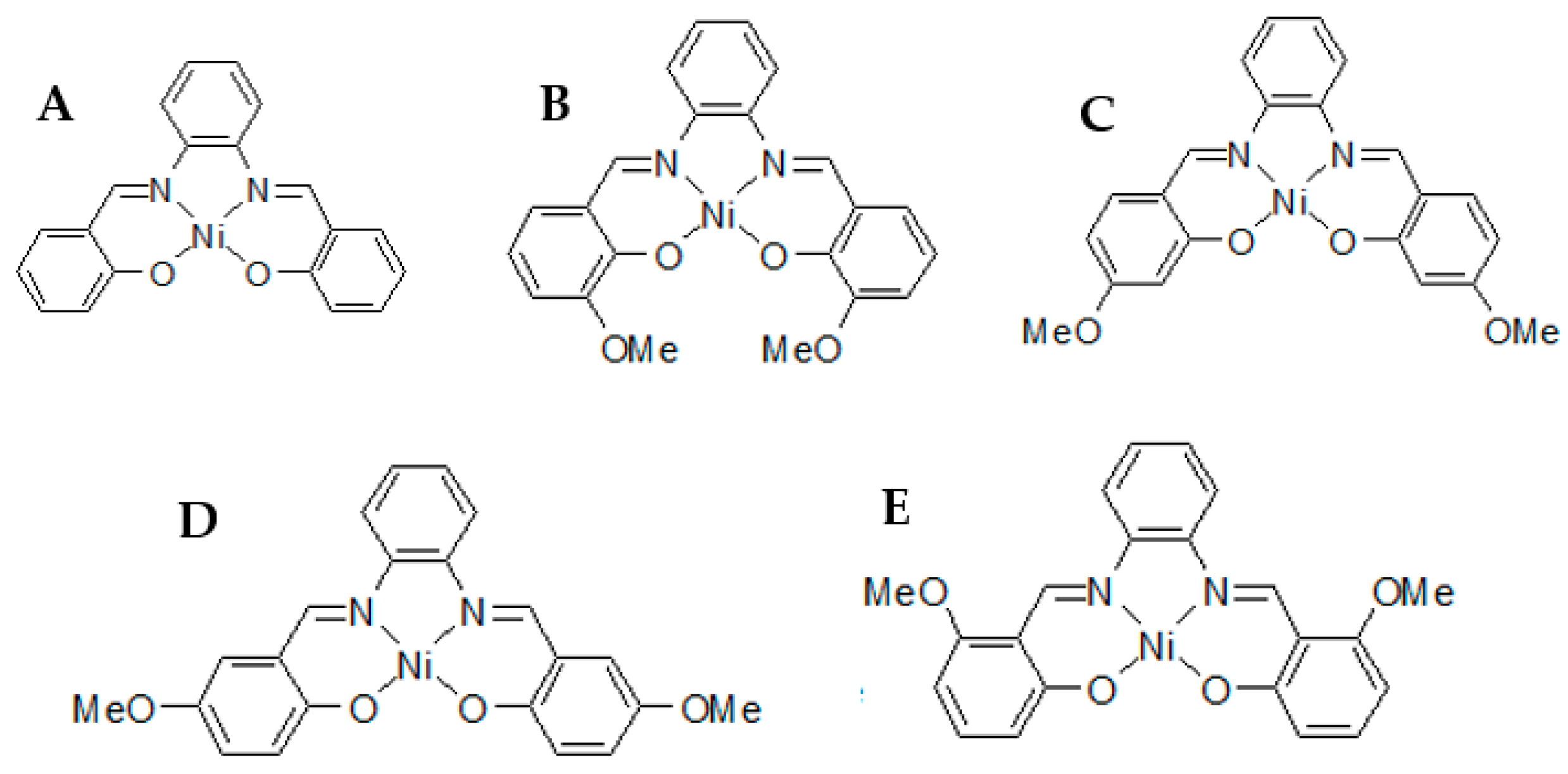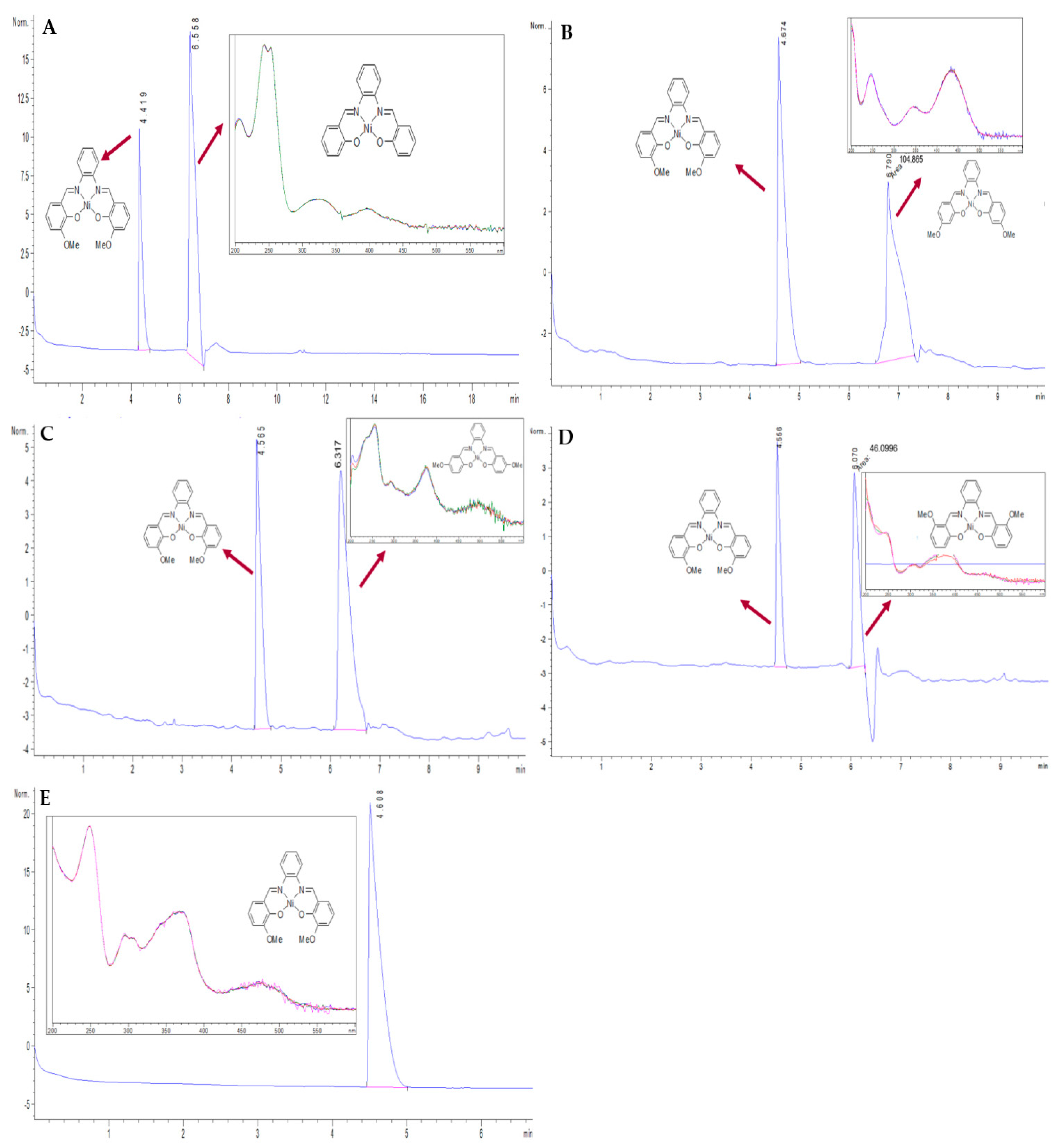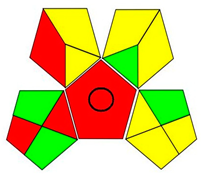Validated Capillary Zone Electrophoresis Method for Impurity Profiling and Determination of NiII(3-OMe-Salophene)
Abstract
:1. Introduction
2. Materials and Methods
2.1. Materials
2.2. Instrumentation
2.3. CZE Separation Conditions
2.4. Preparation of Standard and Stock Solutions
3. Results
3.1. Method Development
3.2. Method Validation
3.3. Evaluation of the Proposed Method
4. Conclusions
Author Contributions
Funding
Data Availability Statement
Conflicts of Interest
References
- Hille, A.; Ott, I.; Kitanovic, A.; Kitanovic, I.; Alborzinia, H.; Lederer, E.; Wölfl, S.; Metzler-Nolte, N.; Schäfer, S.; Sheldrick, W.S.; et al. [N,N′-Bis(salicylidene)-1,2-phenylenediamine]metal complexes with cell death promoting properties. JBIC J. Biol. Inorg. Chem. 2009, 14, 711–725. [Google Scholar] [CrossRef] [PubMed]
- Lee, S.-Y.; Hille, A.; Frias, C.; Kater, B.; Bonitzki, B.; Wölfl, S.; Scheffler, H.; Prokop, A.; Gust, R. [NiII(3-OMe-salophene)]: A Potent Agent with Antitumor Activity. J. Med. Chem. 2010, 53, 6064–6070. [Google Scholar] [CrossRef] [PubMed]
- Baecker, D.; Sesli, Ö.; Knabl, L.; Huber, S.; Orth-Höller, D.; Gust, R. Investigating the antibacterial activity of salen/salophene metal complexes: Induction of ferroptosis as part of the mode of action. Eur. J. Med. Chem. 2021, 209, 112907. [Google Scholar] [CrossRef] [PubMed]
- El Deeb, S.; Ma, B.N.; Gust, R. Determination of NiII(3-OMe-salophene) in MCF7 and HT29 cancer cell lines using HR-CS-AAS and in serum albumin using LC with monolithic silica. Microchem. J. 2012, 101, 24–29. [Google Scholar] [CrossRef]
- Dolnik, V. Borate-containing background electrolytes to improve CE separation in bare capillaries. Electrophoresis 2020, 41, 1073–1080. [Google Scholar] [CrossRef] [PubMed]
- ICH-Guidelines. Validation of Analytical Procedures: Text and Methodology Q2 (R1); International Conference on Harmonization: Geneva, Switzerland, 2005. [Google Scholar]
- Ibrahim, A.E.; Elmaaty, A.A.; El-Sayed, H.M. Determination of six drugs used for treatment of common cold by micellar liquid chromatography. Anal. Bioanal. Chem. 2021, 413, 5051–5065. [Google Scholar] [CrossRef] [PubMed]
- KeithL, H.; Gron, L.U.; Young, J.L. Green Analytical Methodologies. Chem. Rev. 2007, 107, 2695–2708. [Google Scholar] [CrossRef]
- Gałuszka, A.; Migaszewski, Z.; Konieczka, P.; Namiesnik, J. Analytical Eco-Scale for assessing the greenness of analytical procedures. TrAC Trends Anal. Chem. 2012, 37, 61–72. [Google Scholar] [CrossRef]
- Płotka-Wasylka, J. A new tool for the evaluation of the analytical procedure: Green Analytical Procedure Index. Talanta 2018, 181, 204–209. [Google Scholar] [CrossRef]
- Pena-Pereira, F.; Wojnowski, W.; Tobiszewski, M. AGREE—Analytical GREEnness Metric Approach and Software. Anal. Chem. 2020, 92, 10076–10082. [Google Scholar] [CrossRef] [PubMed]
- Ibrahim, A.E.; El Deeb, S.; Abdelhalim, E.M.; Al-Harrasi, A.; Sayed, R.A. Green Stability Indicating Organic Solvent-Free HPLC Determination of Remdesivir in Substances and Pharmaceutical Dosage Forms. Separations 2021, 8, 243. [Google Scholar] [CrossRef]
- Wuethrich, A.; Quirino, J.P. The Application of Green Solvents in Separation Processes; Elsevier: Amsterdam, The Netherlands, 2017; pp. 517–532. [Google Scholar]
- Kok, W. (Ed.) Capillary Electrophoresis: Instrumentation and Operation; Vieweg+Teubner Verlag: Wiesbaden, Germany, 2000; pp. 20–43. [Google Scholar]


| Parameter | Result |
|---|---|
| Migration time (min. ± %RSD) | 4.6 ± 0.2 |
| Linearity range (ng mL−1) | 400–20,000 |
| Linearity equation | Y = 94.7X − 32.5 |
| Correlation coefficient (r) | 0.998 |
| LOD (ng mL−1) | 120 |
| LOQ (ng mL−1) | 390 |
| Drug Concentration (ng mL−1) | Accuracy *** (%Recovery ± %RSD) | Intra-Day Precision *** | Inter-Day Precision *** | ||
|---|---|---|---|---|---|
| tm * | %Recovery ** | tm * | %Recovery ** | ||
| 400 | 99.4 ± 0.25 | 4.6 ± 0.23 | 98.8 ± 0.65 | 4.6 ± 0.26 | 98.5 ± 0.76 |
| 2000 | 99.9 ± 0.61 | 4.6 ± 0.23 | 100.9 ± 0.42 | 4.5 ± 0.27 | 100.1 ± 0.58 |
| 20,000 | 101.4 ± 0.34 | 4.6 ± 0.19 | 101.2 ± 0.49 | 4.6 ± 0.30 | 100.2 ± 0.53 |
| Proposed Method | Reported Method [4] | |
|---|---|---|
| Technique | CZE | HPLC-DAD |
| Application Linearity range | Bulk powder 400–20,000 ng mL−1 | Human serum albumin 100–20,000 ng mL−1 |
| Organic modifier | Acetonitrile | Methanol |
| Time | Migration time 8.0 min | Retention time 3.5 min |
| BGE/ Mobile phase | 50mM buffer borate adjusted to pH 9.3 and ACN (50:50, v/v) Separation voltage: 30 kV | Isocratic elution; Phosphate buffer pH 3.0: Methanol (30:70, v/v) Flow rate: 1 mL min−1 |
| GAPI assessment |  |  |
Publisher’s Note: MDPI stays neutral with regard to jurisdictional claims in published maps and institutional affiliations. |
© 2022 by the authors. Licensee MDPI, Basel, Switzerland. This article is an open access article distributed under the terms and conditions of the Creative Commons Attribution (CC BY) license (https://creativecommons.org/licenses/by/4.0/).
Share and Cite
El Deeb, S.; Ibrahim, A.E.; Al-Harrasi, A.; Wolber, G.; Gust, R. Validated Capillary Zone Electrophoresis Method for Impurity Profiling and Determination of NiII(3-OMe-Salophene). Separations 2022, 9, 25. https://doi.org/10.3390/separations9020025
El Deeb S, Ibrahim AE, Al-Harrasi A, Wolber G, Gust R. Validated Capillary Zone Electrophoresis Method for Impurity Profiling and Determination of NiII(3-OMe-Salophene). Separations. 2022; 9(2):25. https://doi.org/10.3390/separations9020025
Chicago/Turabian StyleEl Deeb, Sami, Adel Ehab Ibrahim, Ahmed Al-Harrasi, Gerhard Wolber, and Ronald Gust. 2022. "Validated Capillary Zone Electrophoresis Method for Impurity Profiling and Determination of NiII(3-OMe-Salophene)" Separations 9, no. 2: 25. https://doi.org/10.3390/separations9020025
APA StyleEl Deeb, S., Ibrahim, A. E., Al-Harrasi, A., Wolber, G., & Gust, R. (2022). Validated Capillary Zone Electrophoresis Method for Impurity Profiling and Determination of NiII(3-OMe-Salophene). Separations, 9(2), 25. https://doi.org/10.3390/separations9020025








